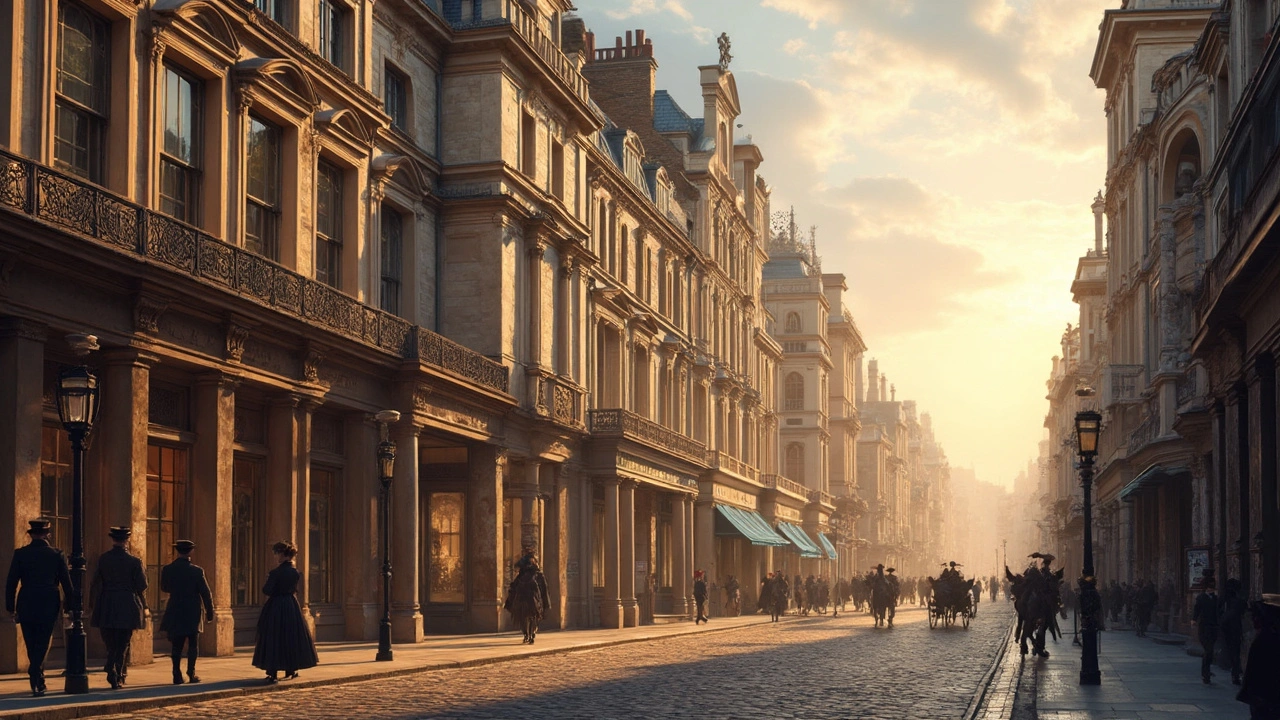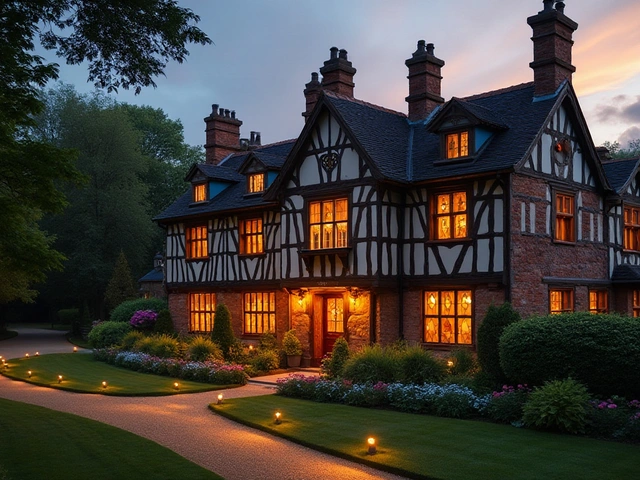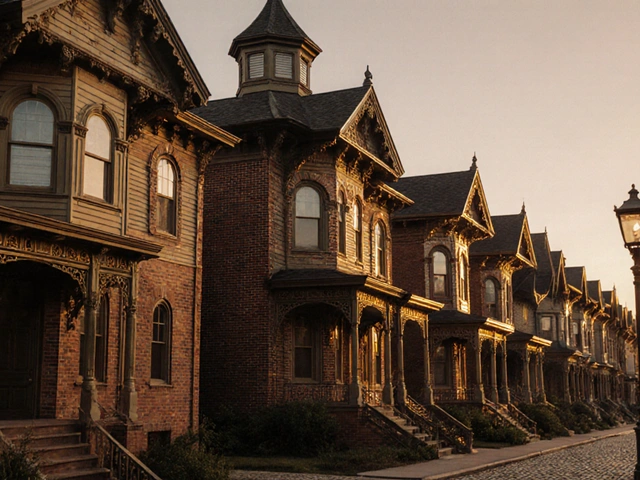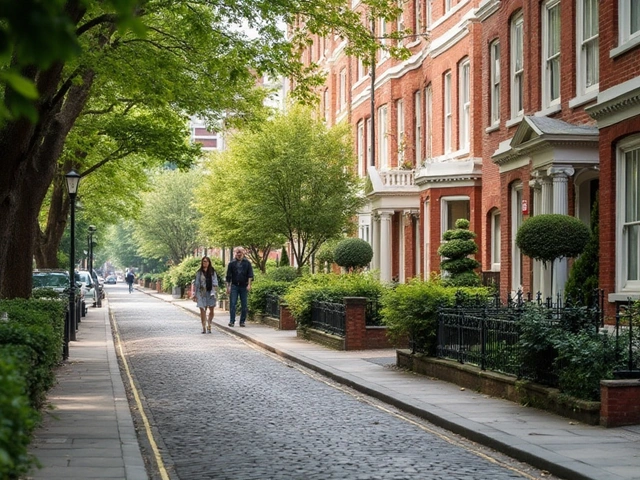Italianate architecture, with its roots in the sunny landscapes of 16th-century Italy, burst onto the scene in the mid-1800s across Europe and America. Did you know it was hugely popular among the rising middle class back then? That's because it was all about capturing elegance without notoriously high costs.
The style includes low-pitched roofs and overhanging eaves with decorative brackets. It’s like the architecture is wearing a fancy hat! Tall, narrow windows lend a sophisticated look, while cupolas and towers add that touch of romance. If you're a fan of decorative cornices and quoins, you’re looking at Italianate details.
Want to bring a slice of history home? Consider incorporating some of these features into your living space. It’s not about going back in time; it’s about making your home both stylish and comfy.
- Origins and Evolution
- Key Characteristics
- Famous Examples
- Tips for Modern Homes
- Preservation and Care
Origins and Evolution
The tale of Italianate architecture starts with a romantic nod to the picturesque rural villas of Renaissance Italy. While folks in Italy cherished compact and practical designs, architects in Britain and then America took inspiration and began crafting more ornate versions that fit their local landscapes. The style saw a boom in the 1840s, thanks mainly to its ability to personify affluence without the price tag that came with other elaborate designs like the Gothic.
One of the key figures in popularizing this style was Sir Charles Barry, who worked his magic on the design of the Reform Club in London in the 1830s. He rocked the architectural styles arena by mixing Italian Renaissance elements with contemporary needs. Structures were more about being eye-catching than blending in, with detailed facades and decorative brackets that added personality.
The journey of Italianate homes didn’t stop there. As settlers crossed over to the Americas, they brought their love for this elegance-packed architecture with them. Between the 1840s to 1880s, strolling down American streets often felt like a tour through a European dream. Cities like Cincinnati and San Francisco embraced these features wholeheartedly, giving rise to urban areas known for their distinct character.
Interestingly, the historic buildings popping up everywhere weren’t just residences; the Italianate style was perfect for public buildings too. Its flexibility allowed architects to scale up designs, which is why you’ll spot Italianate flair in everything from quaint homes to stately courthouses.
The Decline and Legacy
By the late 19th century, tastes shifted, and the Queen Anne style took the spotlight. But Italianate architecture didn’t vanish. It left behind a legacy that still influences today’s design, proving that good style never really goes out. Older homes with these traits often inspire those integrating a touch of the past into their modern lives.
Key Characteristics
The Italianate architecture style isn't shy when it comes to showing off its distinctive features. Let's break down these elements that give it a charm like no other.
Low-Pitched or Flat Roofs
One of the first things you'll notice is the low-pitched or even flat roofs. These often come with wide eaves, supported by pretty fancy brackets. The design not only looks good but also helps with rainwater drainage, making the roof functional and stylish.
Tall, Narrow Windows
The windows in Italianate buildings are almost always tall and slim. Often, you'll find them with rounded tops or hood moldings. This creates a vertical emphasis which gives buildings a height illusion, making them appear grander.
Embellished Cornices
You can't miss the decorative cornices that often crown these structures. These extend beyond the walls, adding an elegant finishing touch, like an artist’s brushstroke. It's a staple feature, boosting the building's visual appeal.
Towers and Cupolas
Ever noticed those little towers on Italianate homes? Towers or cupolas were common, offering not just style but a practical vantage point for looking out over the land. These features are ideal if you're into opening a window and gazing at the sunset.
Stucco and Masonry
The materials often involve stucco for a smooth exterior or brickwork for added texture and robustness. Both contribute to the solid, timeless feel that Italianate buildings are celebrated for.
Fancy a little makeover? Incorporating one or two of these elements can turn suburban homes into your Italian-inspired hideaway, blending tradition with your modern taste. Keep an eye out next time you’re at a historic district—you’ll spot this style everywhere!
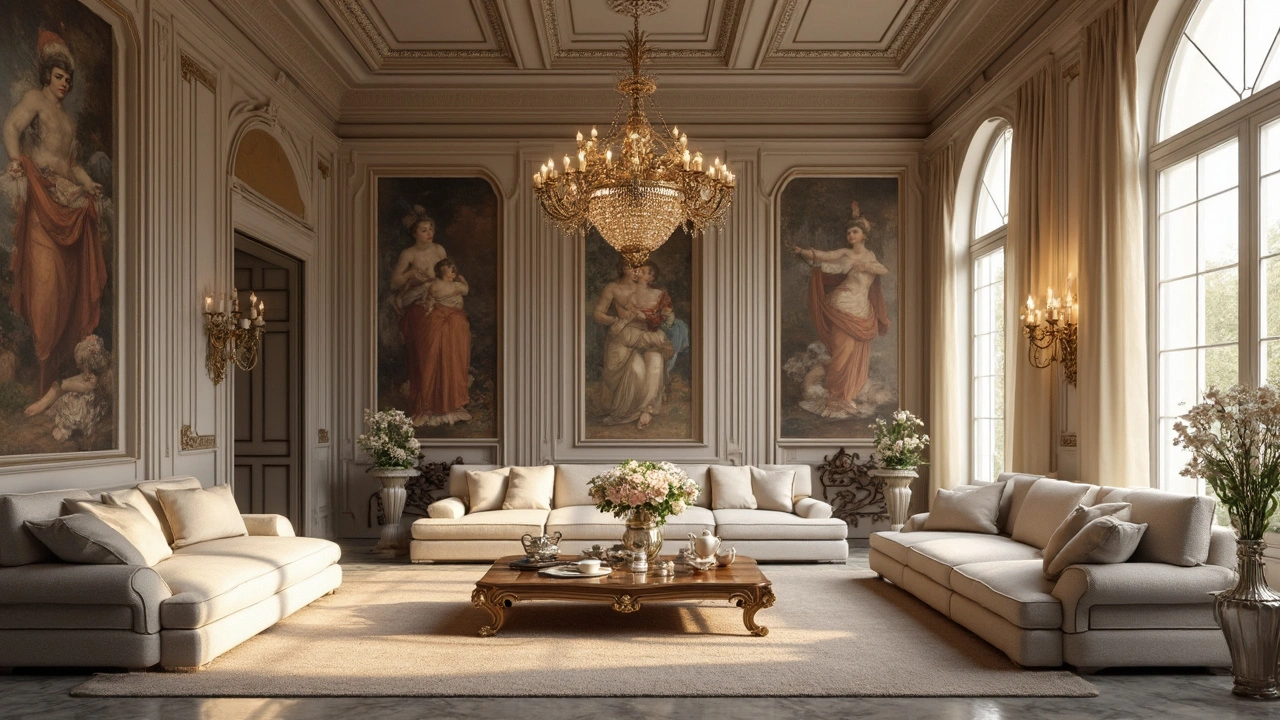
Famous Examples
When we talk about Italianate architecture, a few iconic structures come to mind that perfectly embody the style's elegance and unique features. Let's take a virtual stroll through these architectural marvels.
The Carson Mansion
Located in Eureka, California, the Carson Mansion is often hailed as the best example of Italianate architecture in the United States. Completed in 1886, this majestic home was built by lumber baron William Carson. The mansion boasts every Italianate characteristic you can think of—ornate brackets, embellished windows, and even a touch of Gothic flair with its towering design.
The Philadelphia City Hall
This building isn't just famous for its Italianate style but also because it's one of the largest municipal buildings in the world. Its construction started in 1871 and took over 30 years to complete. The City Hall flaunts a sprawling facade with towering windows, intricate stonework, and grand arches that illustrate the style's elaborate design.
The Customs House, Sydney
For a journey across the oceans, the Customs House in Sydney, Australia, offers another stunning example. Constructed in 1845, this historic building played a crucial role in Australia’s colonial trade. Its large, symmetrical windows, graciously lined by sandstone cornices, highlight the Italianate elegance and functionality.
These structures don't just stand as relics of the past; they continue to inspire modern design and are a testament to the worldwide appeal of Italianate architecture. Whether you're an architecture enthusiast or moving into a Victorian-era neighborhood, spotting these features can be a fun and insightful experience.
Tips for Modern Homes
Bringing Italianate architecture into modern homes can be a fun way to mix the old with the new. It's not about reconstructing a historical monument in your living room but rather stealing some stylish ideas that make your space cozy and unique.
Blend Traditional and Contemporary
You don't need to go full-on Italian villa. Why not take those charming architectural styles and give them a twist? Consider adding tall, narrow windows that nod to Italianate design but with sleek, modern frames. It’s like giving history a little update, and it's sure to catch some eyes.
Decorative Elements
The beauty of Italianate design lies in those little details. Decorative cornices or bracketed eaves can transform an otherwise plain roof into something special. If going all out seems too much, start small with crown moldings inside – they mimic that decorative charm around the ceiling.
An Inviting Landscape
Italians sure knew how to make the outdoors inviting! Bring that charm home with lush greenery or a small cupola as a focal point in the garden. Use modern materials for a fresh look while still tipping your hat to tradition. Want a stat that's as green as those gardens? Home landscapes that echo historic styles often see a 15% boost in value.
Color Palette
Stick with earthy tones for both inside and outside – think warm ochres, terracottas, or deep greens. These colors not only reflect the historic buildings of Italy but also create a soothing, welcoming atmosphere.
Modern Efficiency
Last but not least, while you're jazzing up the aesthetics, don’t forget about modern comforts. Installing smart home technology can mesh nicely with the old-world charm, offering both elegance and efficiency. Energy-efficient windows can mimic those Italianate tall builds perfectly!
Mixing history with today's conveniences makes for one intriguing home. Whether you're fixing up a room or renovating from scratch, these tips should help you get started with embracing this timeless style.
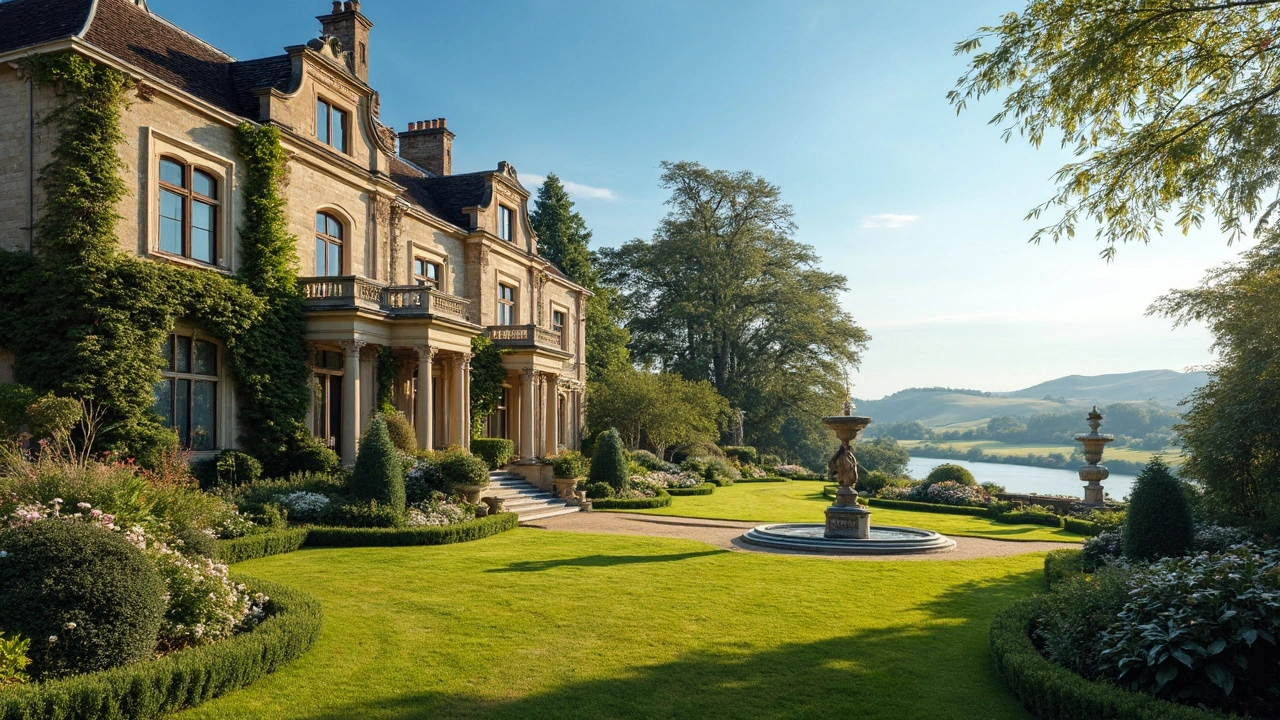
Preservation and Care
Taking care of structures built in the Italianate architecture style goes beyond just aesthetics. It involves a commitment to keeping the historical charm intact while ensuring the building remains functional and safe. Curious about how to do this? Let's break it down.
Regular Maintenance Is Key
Just like with cars, regular check-ups are crucial. The first step in preserving these 19th-century beauties is to be aware of their most vulnerable areas — think roofs, windows, and any decorative elements like cornices and brackets. Keep an eye out for leaks or signs of wear and tear.
Consider getting a professional assessment every few years. A set of expert eyes might catch something you haven’t spotted. If your building has significant features like a cupola or tower, these parts may require special attention due to exposure to the elements.
Authentic Materials Matter
When repairs or renovations are necessary, using authentic materials can make all the difference. Whether it's those distinctive tall, narrow windows or the overhanging eaves, matching the materials keeps the period character intact. Where possible, source materials similar to the originals — it’s like finding missing pieces of a puzzle!
A Little DIY Goes a Long Way
If you’re up for some do-it-yourself projects, start small. A fresh coat of paint using historically accurate colors can revive the exterior without much hassle. Always choose breathable paints to allow moisture out, preventing wood rot in those charming decorative brackets and cornices.
Documenting and Learning
Preservation isn’t just about bricks and mortar. It’s equally about stories and heritage. Keep a record of changes and repairs, not just for your sake but for future caretakers. This record can provide insights into recurring issues and effective solutions.
Financial Incentives and Support
Did you know there are often grants and incentives available for preserving historic buildings? Check out local heritage organizations or governmental programs that offer support. It’s like getting a bonus for preserving history!
In the end, caring for a building in the Italianate architecture style is about honoring its past while keeping it vibrant for the future. With a little attention and love, these buildings can continue to tell their stories for generations to come.

